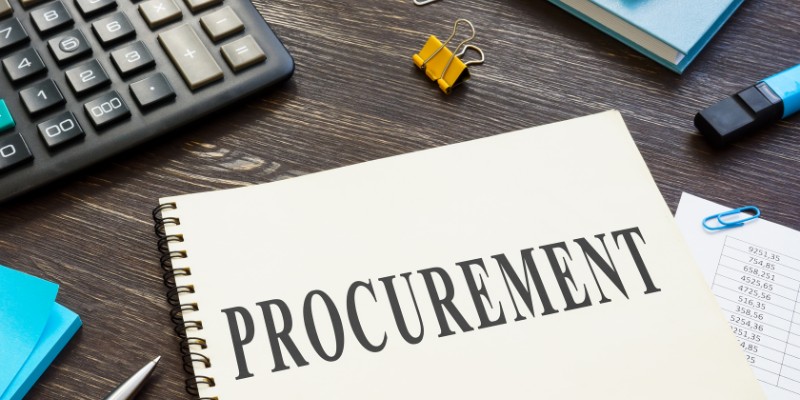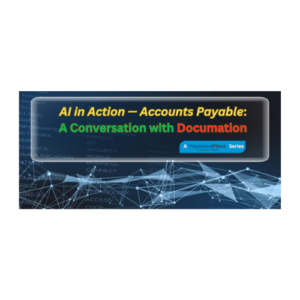How to Reduce Human Error in Procurement
Procurement processes are essential for all businesses, but are often a big cause of frustration. Having a clear process to purchase goods, particularly for the wider business, goes a long way to help, but infrequent users of the system struggle and either look for shortcuts or just get it wrong, causing procurement leaders and finance teams more work. This can result in delays in deliveries, overpayments, supplier relationship management issues and compliance risks. Reducing these hiccups in the procurement processes has a huge positive impact on the business, offering significant cost savings in operational costs each year.
Purchasing and P2P software systems with procurement AI, offer a powerful solution to these challenges. By automating workflows, improving accuracy, and increasing efficiency, the procurement process becomes streamlined and error-free.
The Hidden Costs of Human Error in Procurement
Human errors within the Purchase-to-Pay (P2P) workflow can create a ripple effect of inefficiencies that impact financial stability, supplier management, and regulatory compliance. These errors appear in the following forms:
Manual Data Entry Errors
Manual tasks such as data entry, is a major source of errors in procurement. When employees input purchase orders and invoices manually, they often make mistakes. These can be just typos, which are a natural hazard of manual data input, but also include choosing the wrong supplier, quantity, or allocating the wrong code or tax amount, leaving procurement teams to pick up the errors. This can lead to:
- Order delays due to incorrect information, such as delivery address or contact
- Increased costs from duplicate or inaccurate payments
- Strained supplier relationships resulting from miscommunication, poor data quality, late payments, order cancellations, etc.
Approval Workflow Bottlenecks
Traditional approval workflows depend on human intelligence and oversight. This involves various emails back and forth and can even be as manual as a wet signature from a manager on a printed purchase request. This is inefficient, with emails not being responded to in a timely manner, and worse still, printed orders getting mislaid, leaving the procurement department with no sight of progress. These slow (or no!) response times and errors in task prioritisation lead to:
- Delayed order processing and missed deadlines
- Duplicate orders
- Increased risk of supplier risk management failures and supply chain disruptions
- Bottlenecks that slow down procurement operations, from ordering to supplier payment
Invoice Matching Discrepancies
Matching invoices to purchase orders and receipts is a time-consuming process. Matching is rife with human error as it is one of the the most repetitive tasks and can involve hundreds of sensitive data lines per invoice. Often goods and/or services are not receipted by the wider business, which adds to the work for procurement professionals to chase these receipts. These delays and errors result in potential risks such as:
- Overpayments or duplicate payments
- Lengthy dispute resolutions with suppliers
- Reduced efficiency in accounts payable processes
Compliance Risks from Inaccurate Records
Human errors in procurement data can lead to non-compliance with financial regulations. This can pose serious procurement risks, not just in the UK. E-invoicing requirements from Europe and globally also have mandates that require compliance, including liaising with local government portals confirming receipt and payments of invoices and the compliant storage of invoices too. Common consequences include:
- Regulatory fines and penalties
- Damage to the company’s reputation
- Increased scrutiny from auditors and regulatory bodies

How AI and ML Solve Procurement’s Human Error Problem
AI-driven procurement tools can significantly human reduce errors by automating key processes. Procurement software solutions can solve human error problems by improving the workflows. It should also be noted that not all current ‘human processes’ are the best route for workflow. Reviewing the way the business set up their procurement strategies and not just automating the current process, can bring significant improvements that are further improved by artificial intelligence and machine learning algorithms.
Automating Data Capture and Validation
AI tools such as Optical Character Recognition (OCR) and Machine Learning (ML) extract and validate data from invoices, purchase orders, and receipts with near-perfect accuracy. The advancement of robotic process automation RPA means many different business processes can be used to maximise the final data capture results. Smart PDFs have a text layer that can be read instead of traditional methods of OCR. Template capture has been replaced by freeform, allowing the finance team to guide the AI to recognise anomalies and add these to its knowledge base. Benefits include:
- Eliminating manual data entry errors
- Better procurement efficiency with faster invoice processing and approvals
- Reduced workload for finance and procurement teams
Streamlining Approval Workflows
AI-powered procurement solutions ensure that documents are routed to the right key stakeholders at the right time. AI optimises approval pathways by:
- Automating routing based on priority, urgency, procurer, and business rules using authorisation matrices embedded in the solution, with email reminders and automated follow-ups.
- Reducing bottlenecks by identifying and resolving approval delays. The procurement teams have visibility across the full workflow and can tackle any potential delays before they become an issue.
- Increasing transparency and accountability in procurement decision making.
Intelligent Invoice Matching
Using AI-driven procurement tools, invoices are matched, often against multiple purchase orders, distinguishing entity and currency and matching line by line where required. The coding and approval of these invoices are automated from the detail on the purchase order, and receipting can be made in real time, with any discrepancies flagged for immediate review. This process:
- Reduces overpayments and duplicate payments
- Speeds up payment processing, allowing a straight-through, touchless process
- Minimises procurement mistakes and disputes with suppliers
Improving Compliance and Risk Management
AI ensures that procurement data is accurate, complete, and audit-ready. Key compliance benefits include:
- Verification of invoices at source, against the master vendor database
- Continuous monitoring for errors and inconsistencies
- Fraud detection through anomaly identification
- Alignment with regulatory standards to avoid penalties

Overcoming Barriers to AI Adoption in Procurement
Despite the clear benefits of AI, businesses often face challenges when implementing AI-driven solutions. Here’s how to overcome them;
Common Challenges in AI Implementation
- Resistance to change – Employees may fear job displacement. The talk is endless about how robots are going to replace humans. This is a myth, and there will always be a place for human intelligence in procurement. Communicating the goals for automation and how the team will no longer have to undertake repetitive tasks and can focus on more business value adding processes should help smooth the transition.
- Lack of technical expertise – Teams may struggle with AI integration. This is more about changing from existing procurement systems than technical ability. The AI integration should be seamless, and the P2P teams need to learn to understand and trust the workflow. Training by providers can help, along with a proactive support team, both internally and with software providers.
- Data quality issues – Poor data can affect AI accuracy. However, with evolving innovation around intelligent capture and the requirement for more companies to submit e-invoices, the data quality issues are reducing, and having a solution that can capture e-invoice files and provide viewable documents will become more important.
Building Stakeholder Confidence
To gain internal buy-in, businesses should:
- Communicate the goals of automation and how implementing it will be a step in improving operational efficiency.
- Demonstrate AI’s efficiency through pilot programs and workshops, showing how automation will replace repetitive tasks and free up the team for more business value work.
- Show ROI through cost savings, efficiency metrics and spend analysis. Working as a team to build a business case for automation will help buy-in from key stakeholders and allow the team to be involved in the design and implementation of the solution.
- Provide both in-house training and offer solution provider training to improve team confidence in AI tools.
Choosing the Right AI Solutions
Selecting the right AI-driven procurement system is key. Businesses should look for solutions that offer;
- Seamless integration with existing finance systems.
- Scalability to accommodate future growth, including transparency around costs should the business grow.
- Opt for a non-transaction based solution to ensure fixed costs for a period of time.
- Take references from other businesses using the software.
- Ask about the ‘extras’ such as support and training and not just functionality of the solution. Strong vendor management support and continuous updates that are standard, and visibility of a roadmap to see what new functionality is being developed.
How AI Learns from Human Errors to Improve Procurement Processes
Beyond reducing errors, AI and ML continuously learns from past mistakes to optimise procurement workflows. This occurs in various ways from user intervention and exception workflows to repeated data scans, template updates and more.
Identifying Patterns in Errors
AI analyses procurement data to detect recurring errors, helping businesses;
- Pinpoint weak points in workflows
- Implement procurement strategies based on insights
Continuous Improvement Through Machine Learning
Machine learning algorithms enhance AI capabilities over time by;
- Refining data recognition and validation
- Improving prediction accuracy for decision making in procurement
Turning Errors into Insights
AI doesn’t just correct errors; it transforms them into actionable insights, enabling businesses to;
- Optimise procurement policies and workflows
- Enhance supplier relationship management
- Reduce operational and procurement risks

FAQs
What are the key challenges businesses face when adopting AI in finance?
- Resistance to change from employees
- Understanding the AI affect on workflows and how it can be best utilised
- Choosing a supplier that fits the needs of the organisation
- Ensuring data accuracy and security
What are the most significant AI trends in finance automation for 2025?
- Increased use of predictive analytics
- Increased accuracy of data capture
- Greater adoption of AI-powered chatbots for procurement
- Enhanced AI-driven fraud detection
Why is 2025 an important year for adopting AI in finance workflows?
- AI technology is becoming more accessible and cost-effective
- Regulatory bodies are pushing for more automation and compliance
- Businesses that fail to adopt AI risk falling behind competitors
Conclusion
Purchasing and P2P software systems with Artificial Intelligence (AI) offer a powerful solution to human errors, improving efficiency and enhancing compliance. By automating workflows, improving accuracy, and increasing efficiency, the procurement process becomes streamlined and error-free allowing business to save costs, scale up and stay ahead of their competitors.
If procurement errors impact your bottom line, find out how our AI-driven P2P solutions can transform your procurement processes for the better. Get in touch with the [email protected]





